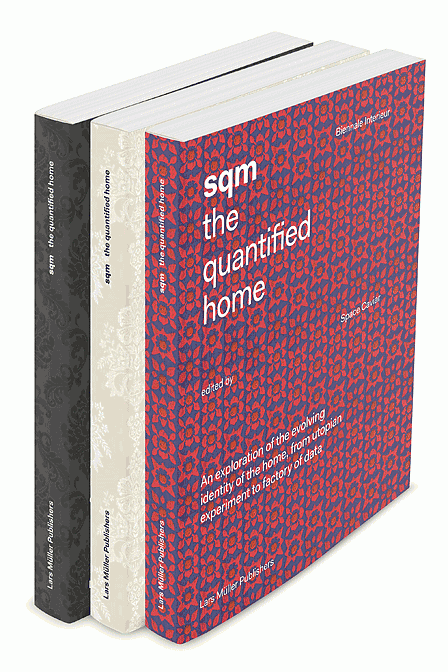Book: SQM, The Quantified Home

I contributed an essay titled “Edited Living” on the Pinterest Home to the new book SQM: The Quantified Home which just launched at the 2014 Biennale Interieur in Kortrijk, Belgium.
The way we live is rapidly changing under pressure from multiple forces—financial, environmental, technological, geopolitical. What we used to call home may not even exist anymore, having transmuted into a financial commodity of which the square meter is the basic unit. Yet, domesticity and the domestic space ceased long ago to be present in the architectural agenda. SQM charts the scale of this change using data, fiction, and a critical selection of homes and their interiors—from Osama bin Laden’s compound to apartment living in the age of Airbnb.
The book has contributions from Jacob Reidel, Keller Easterling, Joseph Grima, Hilde Heynen, Dan Hill, Sam Jacob, Justin McGuirk, Joanne McNeil, Jonathan Olivares, and Bruce Sterling, among others. The dust jackets are made of real wallpaper, a touch which I love, of course.
To give you a taste, here are the first few paragraphs of my essay.
The front door to the Pinterest house is charcoal gray, or lemon yellow, or turquoise blue. It says “Welcome” or “Hello” or “Hey, Y’All.” In winter it carries a monochrome wreath in white or red or gold. In April, rubber boots line up at its foot. In summer, it is surrounded by wisteria. In October, pumpkins pile up. Its number may be hand-painted, or pieced from tile, or set away from the wall, the better to create a crisp shadow. It likes to be photographed ajar.
The front door to the Pinterest house exhibits the characteristics of the houses collected on million-follower Pinterest boards named A Girl Can Dream and Nooks and Floored and Steal This Look. It is colorful. It has accessories. It is dressed for the season. It looks as though it is waiting for something to happen. Personifying the house, dressing it as one might a paper doll, is far from a leap: most pinners (70 million; 80 percent female; 60 percent American) have a picture of themselves at the top of their page. Below, a series of rectangles, each with a cover image, define that portrait through pictures of (mostly) other people’s stuff. domino magazine originated the idea of turning an outfit into a room. Pinterest proliferates it.
As media critic Rob Walker has written of visual collections in general, “It is everything we love about stuff—but without the stuff.” He theorized in 2011 that “simply pondering stuff has become a form of entertainment.” Pinterest, which launched in beta in 2010, would seem to prove his point, except for the “simply” part. Pondering stuff is indeed entertainment, but Pinterest has also become a powerful platform for sales. The types of images pinned to house boards, often further broken down into rooms, and parts of rooms, transform designing and making a house into a series of smaller and smaller purchases. It is not “from the spoon to the city” but a house built from a thousand spoons.
On Twitter
Follow @LangeAlexandraOn Instagram
Featured articles
New Angle: Voice
Getting Curious with Jonathan Van Ness
New York Times
New Yorker